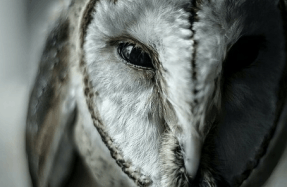Dancing Alvin Ailey’s Revelations in Black and Brown
 Modified detail of Carl Van Vechten's portrait of Alvin Ailey. Image source: Library of Congress.
Modified detail of Carl Van Vechten's portrait of Alvin Ailey. Image source: Library of Congress. I stopped dancing the summer I turned fifteen. It was the summer Michael Brown was shot by police in Ferguson, MO; the summer I began to really think about my skin; and the summer I started to understand just how vast the chasm really is between the lives of white and non-white Americans.
That summer weighed heavy on me—as it did on countless others—but my decision not to return to the Ailey School predated the grief, the protests, even the murder. It had more to do with my teenage petulance, with frustration over my regimented schedule: the hours spent driving to and from class, the weekends lost to rehearsals and physical therapy. I wanted the chance to engage with other things, sure; but mostly, I wanted the freedom to engage in nothing if I so pleased. I couldn’t see at the time that the end of my relationship with Ailey, the last of my tangled efforts to avoid confronting race, would force me to do the opposite.
The first time I saw Revelations, Alvin Ailey’s signature choreographic work, it was not from the audience, but from the wings. I was nine years old, anxious, sweating through my white leotard, fidgeting with the long skirt that cascaded from my waist. I had been a student at the Ailey School for a few years, but that night was the first time I had been selected to perform with the adult dance company.
They had simplified the choreography for the other child dancer and myself, so the steps weren’t particularly challenging or complex. Still, I tended to overthink before going onstage, repeating
You’re reading a preview, subscribe to read more.
Start your free 30 days





